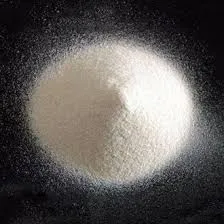
Ное . 14, 2024 19:44 Back to list
how is hydroxyethyl cellulose made
How is Hydroxyethyl Cellulose Made?
Hydroxyethyl cellulose (HEC) is a non-ionic, water-soluble polymer derived from cellulose, widely used in various industries including pharmaceuticals, cosmetics, and construction. Its unique properties, such as thickening, gelling, and film-forming, make it an important ingredient in numerous formulations. The production of HEC involves several critical steps, each carefully controlled to ensure the quality and functionality of the final product.
The process begins with cellulose, which is typically sourced from natural resources such as wood pulp or cotton. Cellulose is a linear polymer composed of glucose units linked by β-1,4-glycosidic bonds. To modify cellulose into hydroxyethyl cellulose, it must first undergo hydroxyethylation, a chemical reaction that introduces hydrophilic hydroxyethyl groups into the cellulose structure.
How is Hydroxyethyl Cellulose Made?
Next, ethylene oxide, the reagent responsible for adding hydroxyethyl groups, is introduced to the cellulose solution. The reaction occurs under controlled conditions, usually at elevated temperatures and pressures, allowing ethylene oxide to react with the cellulose chains. This results in the formation of hydroxyethyl groups attached to the cellulose backbone. The extent of hydroxyethylation can be regulated by adjusting the amount of ethylene oxide and the reaction time, ultimately determining the properties of the resulting HEC, such as viscosity and water solubility.
how is hydroxyethyl cellulose made

After the hydroxyethylation reaction is complete, the mixture must be neutralized to stop the reaction. This is typically achieved by adding an acid, such as hydrochloric acid, which neutralizes the alkaline solution used in the initial steps. Following neutralization, the HEC can be precipitated out of the solution using alcohol, such as ethanol or isopropanol, which helps separate the HEC from the remaining solution.
The precipitated HEC is then washed to remove any unreacted reagents and by-products. This washing process is critical to ensure that the final product meets the required purity standards. Once washed, the HEC is dried, resulting in a fine white powder, which can be milled further to achieve the desired particle size.
Quality control is essential throughout the manufacturing process. Various tests are conducted to ensure that the HEC meets specific standards of viscosity, water solubility, and purity before it is packaged for distribution.
In conclusion, the production of hydroxyethyl cellulose is a complex but well-established process that transforms natural cellulose into a versatile polymer used in a myriad of applications. Understanding the synthesis of HEC not only highlights the ingenuity of chemical processes but also emphasizes the importance of using sustainable materials to create products that benefit various industries. The versatility of HEC positions it as a key ingredient in the formulation of innovative products across different sectors.
-
Versatile Hpmc Uses in Different Industries
NewsJun.19,2025
-
Redispersible Powder's Role in Enhancing Durability of Construction Products
NewsJun.19,2025
-
Hydroxyethyl Cellulose Applications Driving Green Industrial Processes
NewsJun.19,2025
-
Exploring Different Redispersible Polymer Powder
NewsJun.19,2025
-
Choosing the Right Mortar Bonding Agent
NewsJun.19,2025
-
Applications and Significance of China Hpmc in Modern Industries
NewsJun.19,2025







